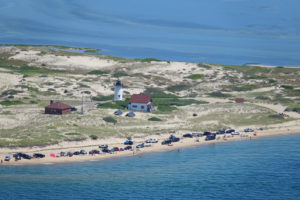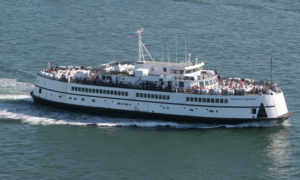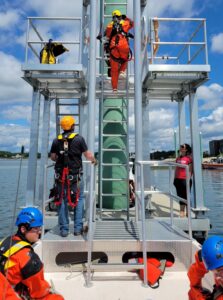Provincetown is famously known as having one of the largest LGBTQ communities in the country, but it is so much more than that. Its rich history, its relationship with the sea, and its eclectic colony of artists makes it a place like no other. Filled with color, comedy and culture, Provincetown is a culmination, as well as a celebration, of the Cape Cod experience.
• Provincetown boasts over 30 miles of beaches, which are part of the Cape Cod National Seashore. In 2016, Travel & Leisure magazine named it “America’s Best Beach Town.” The honor was bestowed not only for the town’s beautiful beaches, but also for its great restaurants, art culture and nightlife.
• Provincetown became a Portuguese whaling and fishing community in the mid-18th century and evolved in the early 1900s into a distinguished art colony, which remains today. In fact, it is said that it’s actually the nation’s oldest art colony still in existence. The town is a beautiful three-mile stretch of galleries, interesting shops, delicious food and impressive old mansions.
• Between April and October, the waters off of Cape Cod are perfect for spotting humpback whales. You can book for an early-morning sightseeing cruise with Whale Watch Dolphin Fleet, which has multiple departures from MacMillan Pier throughout the day.
• The 1920s and 1930s were when the presence of gays and lesbians outnumbered that of artists, writers, actors, and poets. These new arrivers found inspiration in the beauty of the town with its avant-garde freedom. They played a role in the development of the artistic colony here, and they participated in the development of modern American theater.
• The Atlantic House (also known as the A-House) may possibly be the oldest gay nightclub in the U.S. It was built by Provincetown’s first Postmaster, Daniel Pease, in 1798, and was a hangout for some of America’s most well-known writers in the 1920s. The town became truly “gay-friendly” back in the early 1950s and has remained so to this day. It is one of the largest LGBTQ-friendly communities in the country.
• Long Point, the thin peninsula jutting out of Provincetown and curling slightly back toward Truro, was a thriving fishing village during the early 1800s. But in the 1850s, families decided to pack up and move back to the mainland portion of town – and took their houses with them. The structures were floated on casks over a mile of water. Some accounts say that some of the wives were so unperturbed by the action that they kept cleaning and organizing while their homes were afloat. Historians cannot quite agree on what prompted the move, but by the time of the Civil War, only two houses remained on Long Point.
• Long Point, which is the thin peninsula jutting out at the tip of Provincetown and curling slightly back toward Truro, was a thriving fishing village during the early 1800s. In the 1850s, families decided to pack up and move back to the mainland portion of town (although historians have been unable to agree on the reason) – and they took their houses with them. The structures were floated on casks over a mile of water.
• Race Point Lighthouse is found in Provincetown. Built in 1816, it’s an historic lighthouse that was restored by the American Lighthouse Foundation and is listed on the U.S. National Register of Historic Places. It was one of the first lighthouses on Cape Cod to use a rotating beacon.
• Two other lighthouses can also be found in Provincetown, in addition to Race. Back in town, you can walk the harbor break wall from Pilgrim’s First Landing Park out to Long Point Beach, where you can spot both of them: Long Point Light and Wood End Light. Great photo ops abound, but give yourself enough time to walk back.























